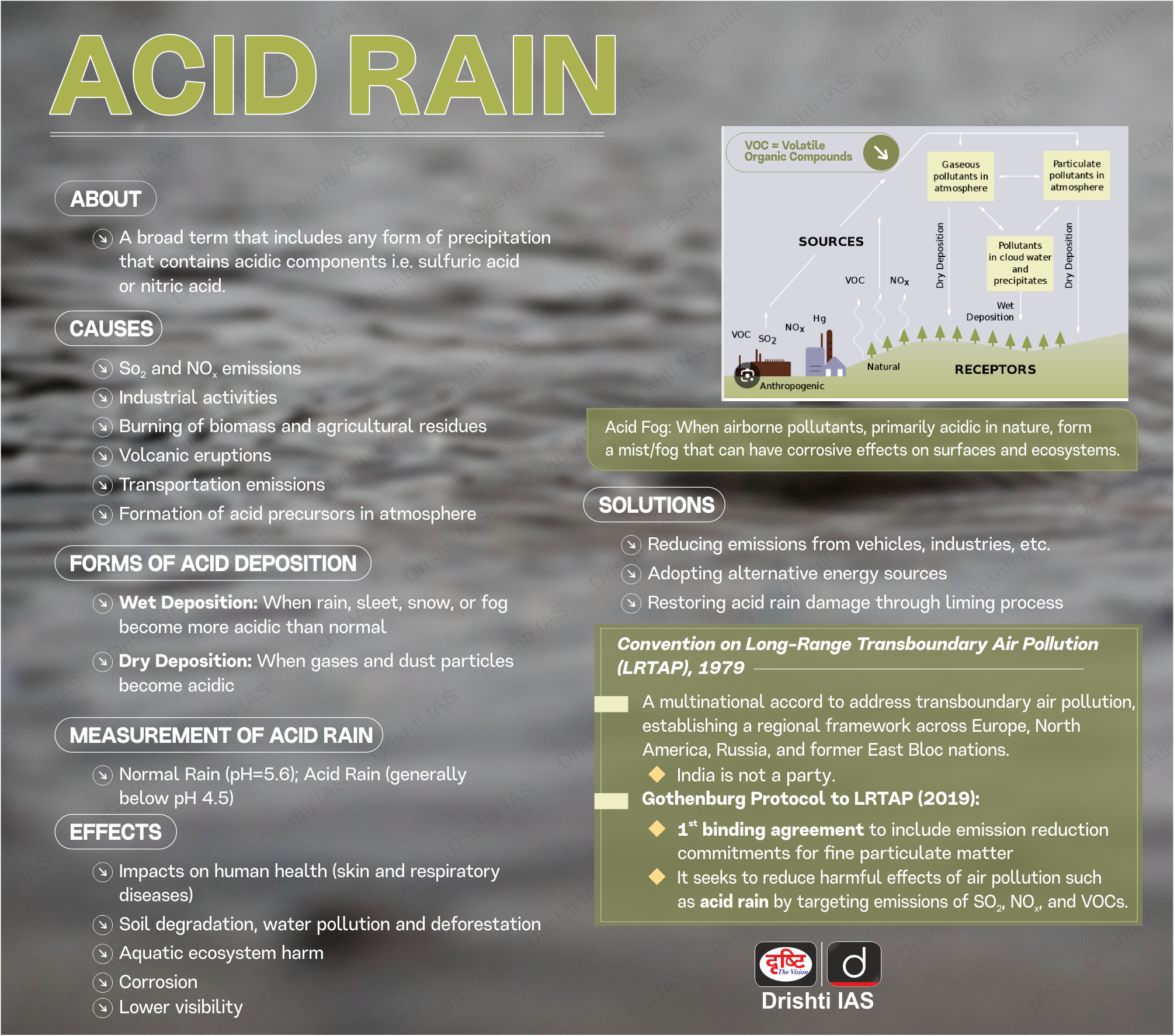Reviewing FGD Rules for Coal Power Plants | 19 Apr 2025
Why in News?
A study commissioned by the Principal Scientific Adviser’s Office recommended rolling back the 2015 mandate requiring Indian coal-fired plants to install Flue Gas Desulphurisation (FGD) systems.
- The Ministry of Environment, Forest & Climate Change (MoEFCC) in 2015 mandated all of India’s 537 coal-fired plants to install FGD systems to reduce sulphur dioxide (SO2) emissions.
- Under a 2022 notification, penalties for non-compliance increase based on the delay in implementation. The penalties are applied per unit of electricity, with higher charges for longer delays.
What is Flue Gas Desulphurisation (FGD)?
- About: FGD is a process that removes sulphur dioxide (SO₂) from exhaust gases (flue gas) produced by burning fossil fuels (coal, oil).
- It is commonly used in coal-fired power stations.
- Common reagents used include limestone (CaCO₃), lime (CaO), and ammonia (NH₃).
- Purpose: Coal contains sulphur, leading to high SO₂ emissions when burned causing acid rain.
- FGD purifies exhaust gases and prevents acid rain, which damages crops, infrastructure, soil, and aquatic ecosystems.
- Types: FGD systems are mainly of three main types:
- Dry Sorbent Injection: It uses limestone to remove SO₂ from flue gas before dust control systems, often referred to as dry injection or spray drying systems.
- Wet Limestone-Based System: It is suitable for large-scale flue gas treatment, using low-cost limestone to remove SO₂ efficiently and produce gypsum.
- Seawater-Based System: It uses alkaline seawater to reduce SO₂ by 70–95%. It is typically used when emission norms are less stringent and offers a lower initial cost.
What the Study Revealed About FGD Installation?
Challenges in FGD Installation Policy
- High Costs: FGD installation costs Rs 1.2 crore per MW, adding financial strain to India’s 218,000 MW coal capacity (expected to rise to 283,000 MW by 2032).
- Low Sulphur Content: 92% of Indian coal has low sulphur content (0.3%-0.5%), making FGD less critical.
- Existing Pollution Control Norms: Thermal plants’ stack heights (220m) and India’s climate already dilute SO₂ emissions, preventing local air quality threats.
- Minimal Acid Rain Threat: IIT-Delhi’s 2024 study (cited in the current research) found acid rain was "not a significant issue" in India.
- Climate Impact: Energy-intensive FGD processes will lead to an additional 69 million tonnes of CO₂ emissions (2025-30) for just a 17 million tonne reduction in SO₂.
- SO₂ has a short-lived cooling effect on global warming, removing it while increasing CO₂ would worsen climate change.
- The study argues that SO₂ emissions offset 0.5°C of global warming from 2010–2019 relative to 1850-1900.
- Poor Compliance: Although coal plants were supposed to install FGD by 2018, only 8% have done so after deadline extensions.
- Currently, 230 plants are installing FGD, while 260 have not yet placed orders.
Recommendations of the Study
- The study suggests tackling particulate matter (PM) pollution due to the high ash content in Indian coal.
- Electrostatic precipitators (ESP) can cut PM pollution by 99% at just Rs 25 lakh per MW.
- The study recommended that FGD systems should only apply to those plants using imported coal or high (>0.5%) sulphur coal.
UPSC Civil Services Examination Previous Year Question (PYQ)
Prelims
Q. Which of the following are the reasons/factors for exposure to benzene pollution? (2020)
- Automobile exhaust
- Tobacco smoke
- Wood burning
- Using varnished wooden furniture
- Using products made of polyurethane
Select the correct answer using the code given below:
(a) 1, 2 and 3 only
(b) 2 and 4 only
(c) 1, 3 and 4 only
(d) 1, 2, 3, 4 and 5
Ans: (a)


